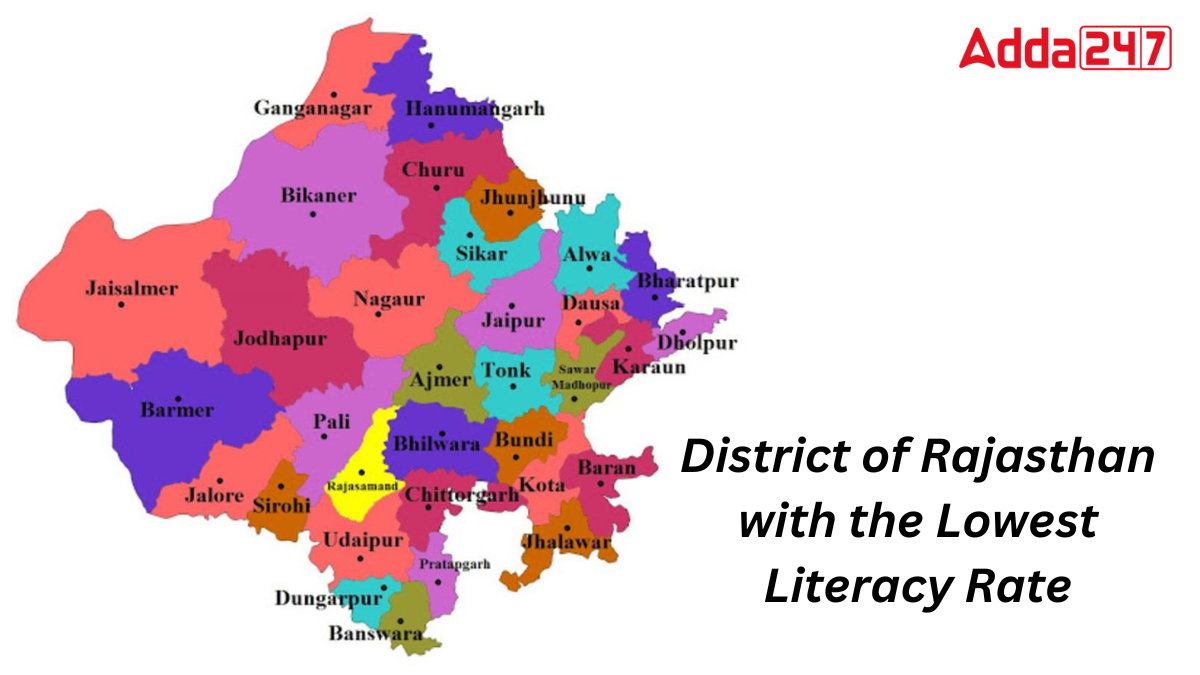Rajasthan, a state in northwestern India, is known for its rich culture, heritage, and desert landscapes. However, like many regions, it faces challenges in education, with varying literacy rates across its districts. Among these, the district with the lowest literacy rate stands out, highlighting the need for focused efforts to improve educational access and quality.
An Overview of Rajasthan
Rajasthan, India’s largest state by area, spans 342,239 square kilometers, covering 10.4% of the country’s land. Located in the northwest, it features the vast Thar Desert and borders Pakistan and five Indian states. Known as the “Land of Kings,” Rajasthan is rich in cultural heritage and history. It is geographically diverse, with the Tropic of Cancer passing through its southernmost tip.
Number of Districts in Rajasthan
Rajasthan is divided into 50 districts, organized into 10 administrative divisions. Jaipur, the capital and largest city, serves as the political and cultural hub of the state. These districts vary widely in geography, culture, and economic activities, reflecting Rajasthan’s rich diversity.
Literacy Rate in Rajasthan
Rajasthan has a literacy rate of 66.11%, according to the latest census. Male literacy is significantly higher at 79.19%, while female literacy lags at 52.12%. This gap highlights the ongoing challenge of gender disparity in education, underscoring the need for focused efforts to improve educational access and quality for women across the state.
District of Rajasthan with the Lowest Literacy Rate
Jalore, a district in Rajasthan with a population of 1,828,730, has the state’s lowest literacy rate at 54.86%. The gender disparity is notable, with a significant portion of the population, especially women, lacking access to education, highlighting the need for targeted educational initiatives.
Second District of Rajasthan with the Lowest Literacy Rate
Sirohi, a district in Rajasthan with a population of 1,036,346, has the second-lowest literacy rate in the state at 55.25%. Despite its scenic beauty and historical significance, the district faces educational challenges, particularly among its female population, underscoring the need for improved educational resources and opportunities.




 Which Country is Known as the Land of Ch...
Which Country is Known as the Land of Ch...
 Which Bird is known as the King of Birds...
Which Bird is known as the King of Birds...
 Which City of Austria is Known as the Ci...
Which City of Austria is Known as the Ci...







